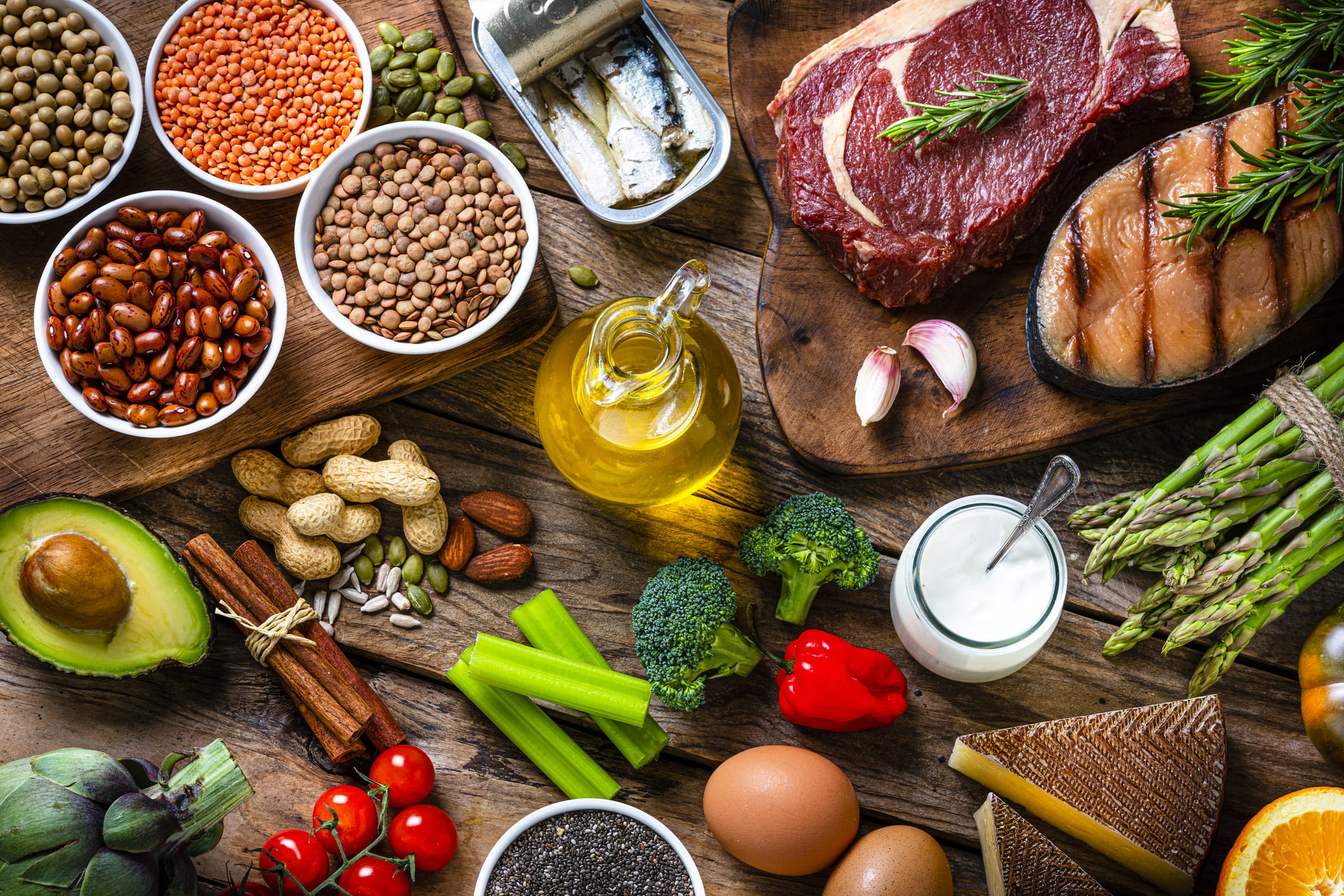Navigating your protein intake

Are you confused about protein? While most Americans get plenty of protein, they don't always meet the recommendations for specific protein subgroups.
According to the latest Dietary Guidelines for Americans, about 75% of Americans meet or exceed the recommendation for meats, poultry and eggs. However almost 90% don't meet the recommendation for seafood and more than 50% don't meet the recommendation for nuts, seeds and soy products.
Understanding the protein recommendations for amounts as well as sources can keep you on track for following an overall healthy and balanced diet.
Protein needs for men and women
Protein is an important nutrient necessary for life. The body needs protein to make and repair all body cells. It also helps fight infection, carry fats, vitamins, minerals and oxygen around the body, build and contract muscles, keep body fluids in balance and even for clotting blood.
For men, the protein recommendations are a bit higher than for women due to larger builds and typically higher muscle mass, which bumps up protein needs. Generally, about 56 grams a day is the recommended daily allowance for the average adult male.
This translates into about 6-7 ounces of protein equivalents per day. The National Academy of Medicine recommends that adults get a minimum of .8 grams of protein for every kilogram of body weight (or .36 grams for every pound of body weight.)
Read about healthy eating for men (and how to take better overall care of your health).
On the other hand, it's generally recommended that women have about 46 grams each day which translates into about 5-6 ounces of protein equivalents per day.
No matter how you calculate it, it's not a lot of protein compared to what average American eats. But these are general recommendations and it's not a one-size-fits-all rule. For example, if you're regularly hitting the gym or leading a very active lifestyle, your body might need more protein to keep up with repair and growth demands.
Pregnancy and breastfeeding introduce a whole new level of demand on the body as well, increasing the need for protein to support both the mother and the growing baby. Be sure to follow your doctor or dietitian's recommendations for a healthy diet and learn more about nutrition during pregnancy and breastfeeding.
Tips for incorporating more protein into your busy life
It's important to diversify your protein sources for better health. Instead of relying only on red or processed meats, mix in lean poultry, fish and plant-based proteins like beans and lentils. Different protein sources offer different nutrients, such as fiber from plant sources and heart-healthy omega-3 fatty acids from fatty fish. Varying your protein intake can help reduce the risk of heart disease, provide essential nutrients and make meals more enjoyable.
Don't forget to add protein to your snacks too! Try easy options like almonds, smoothies with Greek yogurt, hummus with veggies or peanut butter with fruit to get those extra grams in throughout the day.
Some delicious protein-packed dishes can include:
- Fish tacos
- Chicken pesto pizza
- Tex-Mex black bean and chicken wrap
- Salmon with honey-balsamic glaze recipe
MyPlate also includes general protein recommendations for individuals age two and older, as well as examples of protein servings.
Plant-based proteins: A vegan and vegetarian's guide
Embracing a vegan or vegetarian lifestyle doesn't mean you'll be short on protein. In fact, the plant kingdom is teeming with rich and diverse protein sources that can fully meet your nutritional needs.
Beans, lentils and chickpeas are the powerhouses of the plant-based protein world. Tofu and tempeh, both made from soybeans, are versatile protein sources that can be flavored and textured in many ways, perfect for vegans and vegetarians. Quinoa, often thought of as a grain, is actually a complete protein with all essential amino acids, making it a great addition to any dish.
Let's not forget about nuts and seeds. Almonds, chia seeds and hemp seeds, for instance, can be easily incorporated into your diet, whether as a snack or a sprinkle on your morning oatmeal.
Some delicious plant-forward protein dishes include:
The beauty of plant-based proteins lies in their variety. By mixing and matching these foods, you not only cover your protein needs but also benefit from a wide range of other nutrients, such as fiber, vitamins and minerals.
Life's fast pace doesn't have to be a barrier to meeting your protein needs. Strategic meal prep is your ally, enabling you to have ready-to-eat, protein-rich meals and snacks for the entire week.
Next steps:
Register for an upcoming nutrition and healthy eating webinar or cooking class at the King of Prussia Teaching Kitchen
Nutrition information, recipes and food safety tips are provided in collaboration with Main Line Health King of Prussia's Teaching Kitchen.
Interested in preventing Type 2 diabetes? For more information about our Diabetes Prevention Program and upcoming groups, fill out this interest form.
Learn more about Main Line Health's nutrition counseling and weight management services
Want more recipes and health-focused content? Follow us on Pinterest!
 Content you want, delivered to your inbox
Content you want, delivered to your inbox
Want to get the latest health and wellness articles delivered right to your inbox?
Subscribe to the Well Ahead Newsletter.
